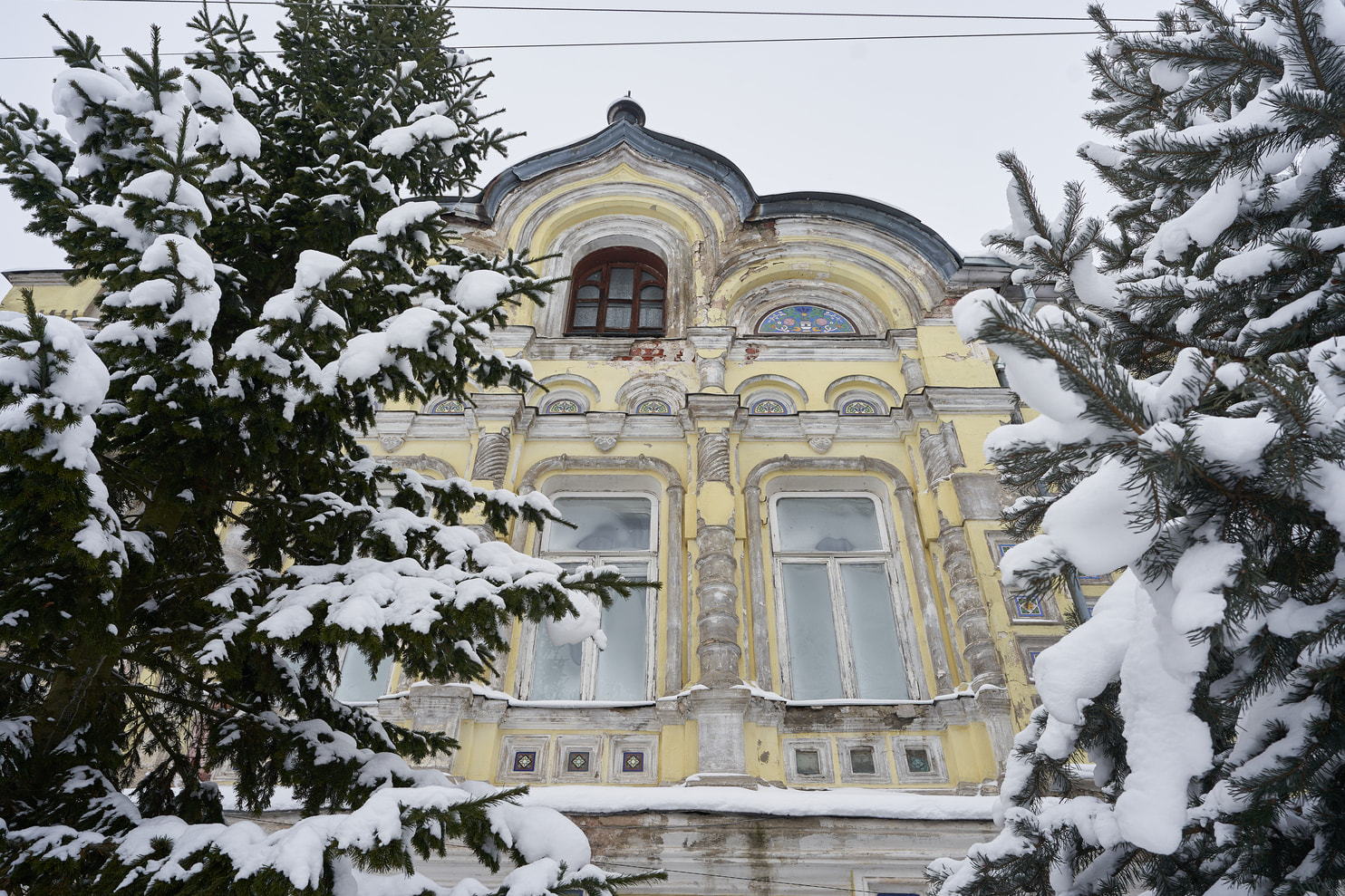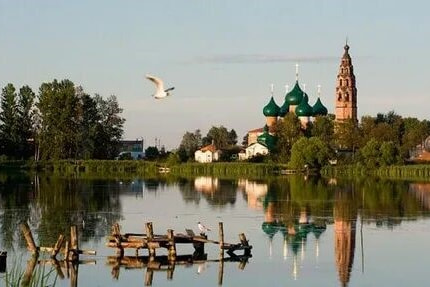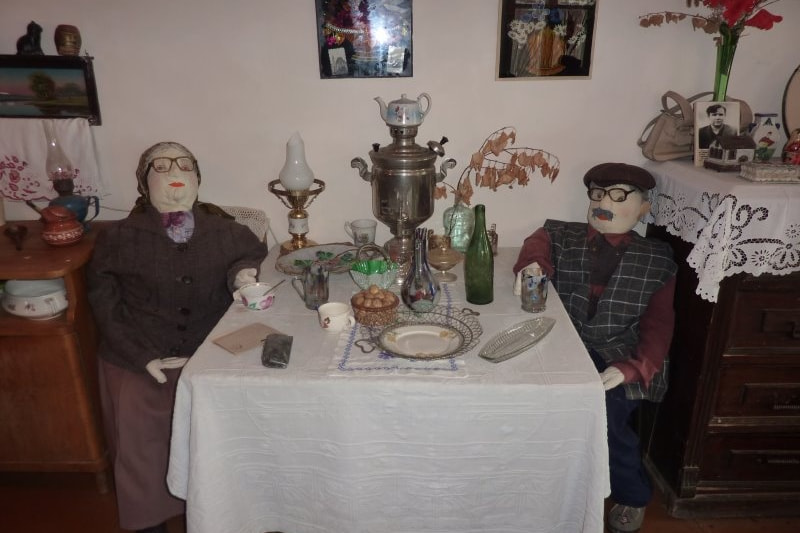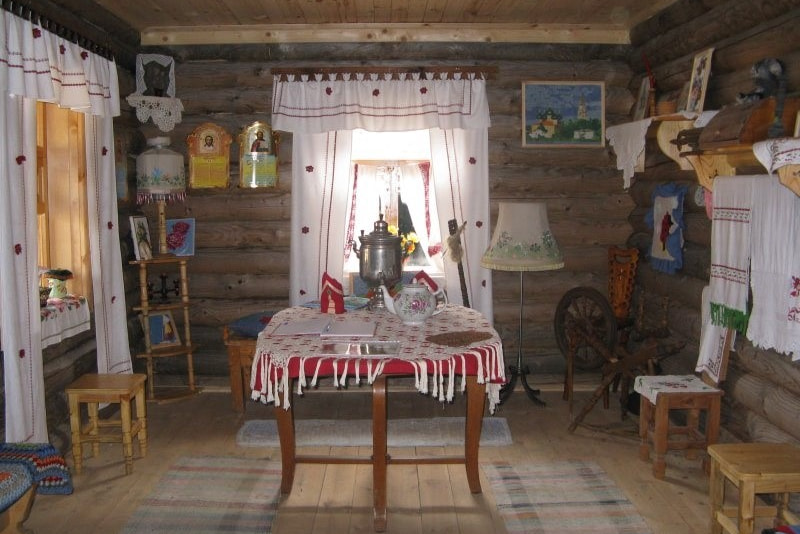"A village with a big name"
The village with the famous name Velikoe is located halfway between Yaroslavl and Rostov. An ancient trade road to Suzdal ran through it. The history of Veliky Novgorod, located at a lively crossroads of important trade routes, is complex and dramatic. Russian Russian principalities embodied the idea of unification on this land, and the foundations of a centralized Russian state were laid.
The village was the haven of Russian tsars more than once. Peter the Great stayed in Veliky more than once during his trips from Moscow to Arkhangelsk. The emperor probably remembered this rich palace settlement. Having decided to reward the participants of the Battle of Poltava, Peter the Great bestowed Great honors on his associate Field Marshal Prince A.I. Repnin. At the behest of Anikita Ivanovich Repnin, the Church of the Nativity of the Virgin Mary in 1712 was erected in the village. The temple marked the beginning of the entire architectural appearance of the Great. Field Marshal's grandson, Prince Pyotr Ivanovich Repnin, built the second church, the Intercession of the Virgin (1741). Later, a Cathedral bell tower was built between the temples. A symbolic "window to Europe" has been cut through the western wall of the bell tower. The entire complex was surrounded by an intricate brick fence with arched gates and chapels. With a light hand, the Velikoselov ensemble became known as the Kremlin.
The village of Velikoe was visited more than once by the great Russian poet N.A. Nekrasov, who loved to hunt in the local forests. From the pen of the poet came the lines that have become textbook:
A green noise is humming.
Green noise, spring noise!
Like doused with milk,
There are cherry orchards,
They're making a lot of noise…
The route is available for students in grades 2-6 and children with disabilities of various nosologies in mixed groups (accompanied by an assistant or tutor), in the absence of contraindications to moderate physical activity. The route promotes the education of patriotism based on socio-cultural, spiritual and moral values through the development of the natural and historical heritage of the region.
Sightseeing tour of the village of Veliky (sightseeing of the monuments of the Velikoselsky Kremlin, the mansion of merchant Lokalov), a visit to the museum of local lore, the Svetelka school museum. Participation in one of the interactive programs (depending on the time of the year).
The route was developed by the Yaroslavl Region State Educational Institution for Additional Education, the Center for Children's and Youth Tourism and Excursions
waypoints
1. Особняк купца А.А. Локалова (с. Великое)

The Lokalov Mansion is an elegant, stylized two–story building with a turret topped with a spire with an intricate weather vane. The creator of this architectural gem (the building was built in 1888-1890) was architect Fyodor Osipovich Shekhtel, one of the largest architects of the turn of the 19th and 20th centuries. This house is a Russian fairy tale embodied in stone. The lower floor of the house is low and squat, like the basement of an old merchant's hut, where goods and supplies were stored. And the second floor is a "dwelling" with high ceilings and huge windows. Three expressive cocoanut arches rise high above the central three-window part of the house. Behind this picturesque pediment, above it, the roof rises, as above the boyar chambers, crowned with a wrought-iron lattice.
2. Black Pond

Nowadays, the pond area is about nine hectares. It remains the largest artificial reservoir in the region, which arose before the construction of the cascade of Volga reservoirs. The water in it is replenished by groundwater and meltwater.
In 1985, the Black Pond was awarded the status of a natural monument.
The name of the pond, Black– is associated by local legends with the work of the forges that once stood on its shores: allegedly, the water acquired a dark color from coal dust and burning.
3. Velikoselsky Museum of Local Lore

You can learn more about the history of the village of Velikoe, once the largest in the Yaroslavl province, by visiting the Velikoselsky Museum of Local Lore. The museum of local lore has a collection of antique linen towels, a hall with a collection of objects from the life of 19th–20th century villagers, merchant life, rural crafts and much more.
4. Svetelka Museum

And in the ethnographic museum "Svetelka" of the Velikoselskaya school you will see the interior of a Russian hut, learn a lot of interesting things from the history of the village and folk crafts.


